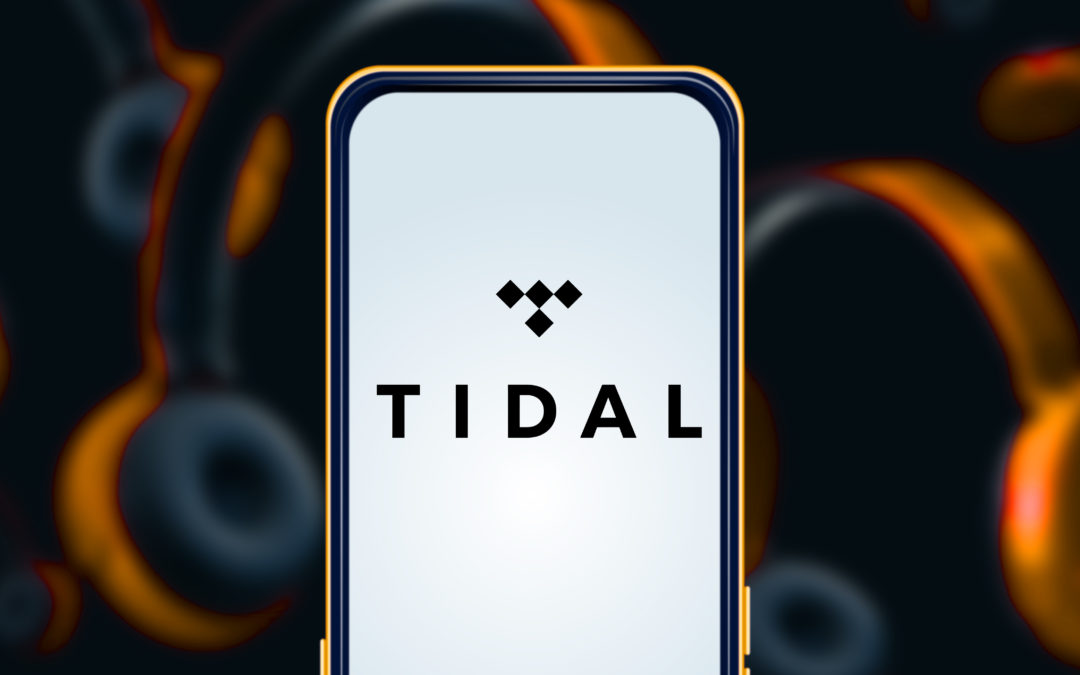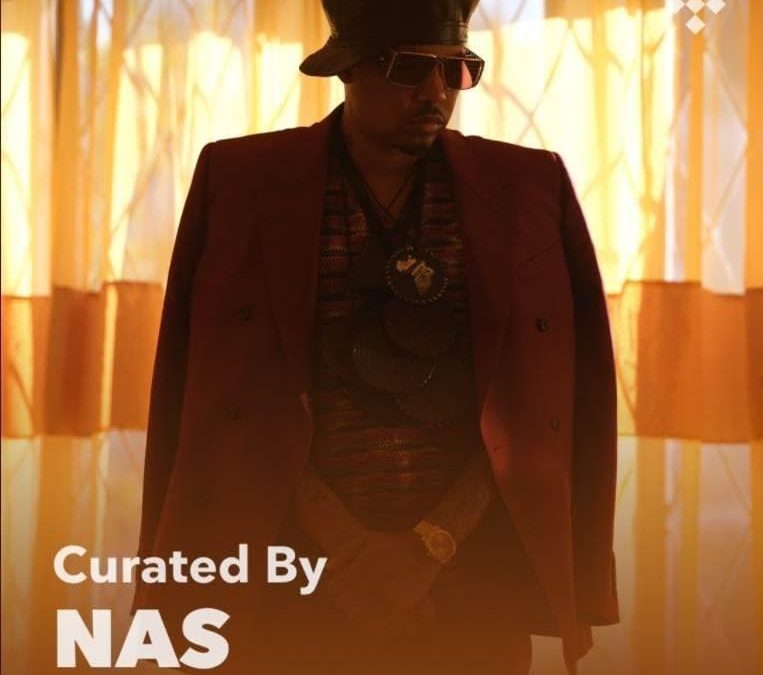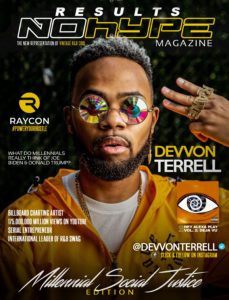
by Jonathan P-Wright | Jun 26, 2024 | Business News, Latest, Music News |
Image credit: DANIEL CONSTANTE / Shutterstock.com
Tidal, the pioneering platform renowned for its commitment to high-fidelity audio, has unveiled a strategic revamp of its lossless and immersive audio formats. This pivotal decision, slated to take effect on July 24th, marks a seismic shift in the company’s approach to delivering unparalleled sonic experiences to its discerning user base.
The Pursuit of Uncompromised Audio Quality
Tidal has long been revered as a bastion of pristine audio quality, catering to the discerning tastes of audiophiles and music enthusiasts alike. The platform’s unwavering dedication to lossless audio formats has set it apart from its contemporaries, garnering a loyal following among those who refuse to compromise on sonic fidelity.
Streamlining the Lossless Audio Experience
In a bold move, Tidal has announced that it will be phasing out support for the Master Quality Authenticated (MQA) and 360 Reality Audio formats. This strategic decision underscores the company’s commitment to providing a seamless and accessible lossless audio experience to its users.
The MQA format, while lauded for its ability to retain superior audio quality with smaller file sizes than traditional FLAC files, has faced challenges in terms of widespread adoption and compatibility. By transitioning away from MQA, Tidal aims to streamline its lossless audio offerings, ensuring a more consistent and user-friendly experience across a broad range of devices and platforms.
Embracing Open-Source and Industry-Leading Standards
Moving forward, Tidal has declared its intention to embrace the Free Lossless Audio Codec (FLAC) as the default format for stereo audio streaming. This open-source codec has gained widespread acceptance within the audiophile community, offering uncompromised audio quality without the constraints of proprietary formats.
Additionally, Tidal has chosen to adopt Dolby Atmos as its preferred format for immersive audio experiences. This cutting-edge technology, renowned for its ability to create a multi-dimensional soundscape, has garnered widespread industry adoption and boasts a vast catalog of compatible devices and content.
Prioritizing Accessibility and Cost-Effectiveness
In a candid acknowledgment of the challenges posed by proprietary formats, Tidal has cited the widespread compatibility, catalog availability, and artist adoption of Dolby Atmos as key factors in its decision-making process. By embracing industry-leading standards, the platform aims to provide its users with a seamless and cost-effective means of accessing high-quality audio content.
Furthermore, Tidal’s embrace of the open-source FLAC format for stereo audio streaming eliminates the need for artists to navigate through third-party intermediaries, fostering a more direct and efficient creative process.
Ensuring a Smooth Transition for Existing Users
For Tidal subscribers who have amassed collections of MQA tracks or albums, the platform has pledged to automatically replace these files with the highest available FLAC quality versions. This seamless transition extends to MQA files downloaded for offline playback, ensuring that users can continue to enjoy their cherished music libraries without interruption.
Conversely, 360 Reality Audio files will be rendered unavailable for streaming, reflecting Tidal’s strategic shift towards more widely adopted immersive audio formats.
Continuous Innovation and Commitment to Excellence
While Tidal has expressed no immediate plans for further changes to its audio format offerings, the company’s recent actions underscore its dedication to continuous innovation and its unwavering commitment to delivering the finest audio experiences to its user base.
This strategic overhaul comes on the heels of Tidal’s decision to consolidate its subscription tiers and lower its monthly pricing to $10.99, a move that aims to make premium audio streaming more accessible to a broader audience.
Redefining the Music Streaming Landscape
Tidal’s bold move to reshape its lossless and immersive audio formats represents a seismic shift in the music streaming landscape. By embracing open-source and industry-leading standards, the platform is poised to deliver unparalleled sonic experiences while fostering a more inclusive and cost-effective ecosystem for artists and music enthusiasts alike.
As the demand for high-fidelity audio continues to grow, Tidal’s commitment to pushing the boundaries of audio quality positions it as a trailblazer in the ever-evolving world of music streaming.
The Audiophile’s Sanctuary: Tidal’s Unwavering Pursuit of Sonic Perfection
For years, Tidal has stood as a beacon of hope for audiophiles and music aficionados seeking an uncompromising sonic experience. The platform’s unwavering dedication to lossless audio formats has garnered a loyal following among those who refuse to settle for anything less than sonic perfection.
Tiers of Audio Quality: Catering to Every Listener’s Needs
Tidal’s tiered approach to audio quality has long been a hallmark of its service, offering a range of options to cater to diverse listening preferences and technical capabilities. At the entry-level, the platform provides a low-quality tier that utilizes AAC files capped at 320kbps, suitable for casual listening or scenarios where bandwidth is limited.
For those seeking a more immersive experience, the high-quality tier offers CD-quality lossless FLAC files, ensuring that every nuance and detail of the music is faithfully reproduced.
However, it is the Max tier that truly sets Tidal apart, catering to the most discerning audiophiles. Until recently, this tier featured MQA and higher-resolution FLAC files, pushing the boundaries of audio fidelity and offering an unparalleled listening experience.
The MQA Conundrum: Balancing Innovation and Accessibility
Tidal’s decision to discontinue support for the MQA (Master Quality Authenticated) format has sent ripples through the audiophile community. While MQA garnered praise for its ability to retain superior audio quality with smaller file sizes than traditional FLAC files, its adoption was hindered by the requirement for specialized hardware or software to play the files.
This limitation, coupled with the introduction of Tidal’s HiRes FLAC format last year, signaled the impending demise of MQA on the platform. By making HiRes FLAC the preferred default for Max quality streaming, Tidal effectively paved the way for a more streamlined and accessible approach to lossless audio delivery.
Embracing Open Standards: The Rise of FLAC and Dolby Atmos
In a move that underscores Tidal’s commitment to accessibility and cost-effectiveness, the platform has embraced the Free Lossless Audio Codec (FLAC) as the default format for stereo audio streaming. This open-source codec, widely adopted by the audiophile community, offers uncompromised audio quality without the constraints of proprietary formats.
Additionally, Tidal has chosen to adopt Dolby Atmos as its preferred format for immersive audio experiences. This cutting-edge technology, renowned for its ability to create a multi-dimensional soundscape, boasts widespread industry adoption and a vast catalog of compatible devices and content.
By aligning with these industry-leading standards, Tidal aims to provide its users with a seamless and cost-effective means of accessing high-quality audio content, while fostering a more inclusive and efficient creative ecosystem for artists.
Prioritizing User Experience and Artist Empowerment
Tidal’s strategic decisions regarding audio formats were driven by a multitude of factors, chief among them being the prioritization of user experience and artist empowerment. By embracing widely compatible formats like Dolby Atmos and the open-source FLAC, the platform aims to eliminate barriers to entry and ensure that its users can seamlessly access premium audio content across a broad range of devices.
Moreover, Tidal’s embrace of FLAC for stereo audio streaming eliminates the need for artists to navigate through third-party intermediaries, fostering a more direct and efficient creative process. This move not only empowers artists but also aligns with Tidal’s overarching mission of delivering uncompromised audio experiences to its discerning user base.
Ensuring a Smooth Transition for Existing Libraries
In recognition of the potential disruption caused by the format changes, Tidal has implemented measures to ensure a smooth transition for its existing user base. For subscribers who have amassed collections of MQA tracks or albums, the platform has pledged to automatically replace these files with the highest available FLAC quality versions.
This seamless transition extends to MQA files downloaded for offline playback, ensuring that users can continue to enjoy their cherished music libraries without interruption. Conversely, 360 Reality Audio files will be rendered unavailable for streaming, reflecting Tidal’s strategic shift towards more widely adopted immersive audio formats.
Continuous Innovation and Commitment to Excellence
While Tidal has expressed no immediate plans for further changes to its audio format offerings, the company’s recent actions underscore its dedication to continuous innovation and its unwavering commitment to delivering the finest audio experiences to its user base.
This strategic overhaul comes on the heels of Tidal’s decision to consolidate its subscription tiers and lower its monthly pricing to $10.99, a move that aims to make premium audio streaming more accessible to a broader audience. By combining these initiatives, Tidal is poised to redefine the music streaming landscape, offering unparalleled sonic experiences while fostering a more inclusive and cost-effective ecosystem for artists and music enthusiasts alike.
The Future of Music Streaming: Tidal’s Vision
As the demand for high-fidelity audio continues to grow, Tidal’s commitment to pushing the boundaries of audio quality positions it as a trailblazer in the ever-evolving world of music streaming. By embracing open standards and industry-leading technologies, the platform is poised to deliver unparalleled sonic experiences while fostering a more inclusive and cost-effective ecosystem for artists and music enthusiasts alike.
With its unwavering pursuit of sonic perfection and its dedication to continuous innovation, Tidal stands as a beacon of hope for audiophiles and music aficionados seeking an uncompromising listening experience. As the future of music streaming unfolds, Tidal’s vision promises to redefine the boundaries of what is possible, elevating the art of music to new heights and ensuring that every note, every nuance, and every sonic detail is faithfully reproduced for generations to come.

by Jonathan P-Wright | May 31, 2022 | Business News, Latest, Music News, New Music Alert |
TIDAL continues to be a major player in the music streaming world
Since its launch in 2015, TIDAL has continued to be a major player in the music streaming world. The company has always been focused on offering a high-quality experience to its users, and that has paid off. In 2019, TIDAL had three times the number of subscribers as it did in 2016.
What is TIDAL?
TIDAL is a music streaming service that offers its users high-quality audio and exclusive content. The company has been a major player in the music streaming world since its launch in 2015, and it continues to grow in popularity. TIDAL offers two tiers of service: a free, ad-supported version and a premium, subscription-based version.
The premium service offers lossless, high-fidelity audio quality and access to exclusive content, including live concerts and music videos. TIDAL has a growing list of celebrity supporters, including Jay-Z, Beyonce, Rihanna, Madonna, and Kanye West.
How TIDAL got its start
TIDAL is a music streaming platform that was launched in 2014. The company was founded by a group of music industry veterans, including Jay Z, who saw an opportunity to create a platform that would offer high-quality audio and a better user experience than what was currently available.
Since its launch, TIDAL has become one of the most popular music streaming platforms, with over 60 million users worldwide. The company has continued to innovate, most recently launching a new feature that allows users to download songs for offline listening.
TIDAL was founded in 2014 by a group of music and technology entrepreneurs. The company’s mission is to provide artists with a better way to share their music with the world. TIDAL is headquartered in New York City.
The company’s flagship product is a streaming music service that offers high-quality audio and video content. TIDAL also offers a variety of other features, including exclusive content, live events, and artist-curated playlists.
In just a few short years, TIDAL has become one of the most popular streaming services in the world. The company has over 3 million paying subscribers and continues to grow at an impressive rate.
TIDAL’s success is due in large part to its commitment to offering a superior experience for both artists and fans. The company’s focus on quality has helped it stand out in a crowded marketplace, and its dedication to giving artists a better platform has made it a favorite among many top musicians.
As TIDAL continues to grow, it will undoubtedly remain a significant player in the streaming music world.
Despite challenges, TIDAL remains a significant player in the music streaming world, and it looks poised to continue its success for years to come.
What sets TIDAL apart from other streaming services
When it comes to music streaming services, TIDAL is one of the top players in the game. But what sets TIDAL apart from its competitors? For starters, TIDAL offers lossless audio quality. This means that you can stream music at a higher bitrate than other services, which results in better sound quality.
TIDAL also offers exclusive content from some of the most prominent artists globally, including Jay-Z, Beyonce, and Rihanna. And if you’re a fan of music videos, TIDAL has you covered there, too, with its massive selection of music videos available to stream. So if you’re looking for a premium streaming experience, TIDAL is definitely worth checking out.
TIDAL’s History
When TIDAL first launched in 2014, it was billed as the first music streaming service that offered lossless, CD-quality audio. This made it a favorite among audiophiles, who were willing to pay a premium for the higher quality sound. In the years since, TIDAL has continued to be a dominant player in the music streaming world, thanks to its commitment to quality and its exclusive content offerings.
TIDAL’s history is one of innovation and success. The company was founded by a group of music industry veterans, including Jay-Z and Kanye West.
Thanks to its high-quality sound and exclusive content offerings, TIDAL quickly gained traction with users. In 2016, Sprint acquired TIDAL, which helped boost its profile even further. Today, TIDAL remains one of the leading music streaming services, with millions of users worldwide. TIDAL was purchased by Jack Dorsey’s Square platform in 2021.
TIDAL’s Impact on the Music Industry
TIDAL continues to be a prominent player in the music streaming world, with a recent report revealing that the platform now has over three million paid subscribers. This is a significant increase from the last reported figure of 1.4 million, and it cements TIDAL’s position as one of the most popular music streaming services.
But what does this mean for the music industry? TIDAL’s arrival on the scene was a game-changer, offering high-quality lossless audio and exclusive content from some of the biggest names in music. This put pressure on other streaming services to up their game, and we’ve seen improvements across the board as a result.
Now that TIDAL is established as a leading player, it looks like it’s here to stay. The platform continues to invest in exclusive content and artist partnerships, which is good news for music fans. But it also means that other streaming services need to keep up if they want to stay competitive.
TIDAL’s artist-first approach
TIDAL has always been a company that puts artists first. Whether it’s through exclusive content or high-quality audio, TIDAL has always strived to give artists the best platform to showcase their music. And that commitment to artists continues with the TIDAL blog. The TIDAL blog is a place where artists can share their stories, insights, and perspectives on the music industry. The blog is also a place where fans can go to learn more about their favorite artists.
The TIDAL blog is a great way for artists to connect with fans and give them an inside look at their creative process. But it’s also a place where fans can learn more about the artists they love and discover new music.
The TIDAL blog is a must-read for any music fan with exclusive interviews, behind-the-scenes photos, and more.
TIDAL’s exclusive content
TIDAL continues to be a key player in the music streaming world with its exclusive content offerings. The company has a wide variety of content, including music videos, live performances, etc. TIDAL also offers an artist-centric approach to its service, giving artists greater control over their work. This has led to several impressive results, such as Beyonce’s Lemonade album being released exclusively on TIDAL. While other streaming services may offer more comprehensive libraries, TIDAL’s focus on quality over quantity has kept it afloat in the ever-changing world of online music.
How to use TIDAL
If you’re a music lover, there’s a good chance you’ve heard of TIDAL. Launched in 2014, TIDAL is a music streaming service that offers high-quality audio and videos. It’s also one of the few services that provide lossless, CD-quality audio tracks. In other words, TIDAL is the perfect place to go if you’re looking for an immersive listening experience.
So how do you use TIDAL? First, you’ll need to sign up for an account. You can do this on the website or through the mobile app. Once you have an account, you can explore the massive catalog of music and videos available on TIDAL. You can search for specific artists, songs, or albums or browse by genre.
One of the best things about TIDAL is the ability to create custom playlists. If you’re not sure where to start, check out some of the pre-made playlists curated by TIDAL’s team of experts. And if you find a song or album that you love, be sure to add it to your favorites so you can easily find it again later.
Ready to start streaming with TIDAL
Conclusion
In conclusion, TIDAL continues to be a leading player in the music streaming world. TIDAL is one of the best options for music lovers and audiophiles alike with its hi-fi sound quality, exclusive content, and artist-friendly approach. TIDAL is definitely worth checking out if you’re looking for a premium streaming experience.

by Jonathan P-Wright | Mar 5, 2021 | Latest, Music News |
Tidal, the music streaming service started by Jay-Z, has been purchased by Twitter, the payments firm, of which CEO Jack Dorsey is a significant investor. Tidal co-owner Jay-Z took a 33% stake in the company and will now be a member of the board of directors. He better gets some time off the clock if he’s inducted into the Rock and Roll Hall of Fame. It was said that artists would be “empowered” by this agreement. This contract is designed to support artists and help the industry as a whole. As he has said in other tweets, it’s a big deal for many people; the fact that Jack and I have discussed TID’s possibilities only serves to make me more optimistic about its future. This universal desire makes me all the more eager to be a part of the Square board.
While the concept was uncomplicated, it took a long time to put together; Dorsey claims the project actually started when he stumbled upon new ways for artists to fund their own endeavors. “With what we’ve been able to do for the cash-for-transaction vendors, we also feel we can help the artists we represent now,” he noted We’re going to start with the small and concentrate on the most essential fan bases. Dorsey also stated that Jay-Z will serve on the advisory board, which will span the company’s entirety, not just Tidal. And as well as Tidal’s “celebrity and creative spirit,” such as songs like Drake’s “Started From the Bottom” and Puff Daddy’s “Come Fly With Me,” we’re all included in his public social media posts on the same day.
Tidal confirms that rapper Jay-Z and other artists, including Rihanna and Kanye West, purchased it as an artist-owned streaming service in 2015. Per Forbes, Jay-Z had previously sold a third of the company to T-Mobile; last week, he re-bought the shares he had once sold to Sprint, now taking control of the company. Dorsey and Jay-Z first discussed the acquisition of Tidal with the press a few months ago.
RESULTSANDNOHYPE Magazine and MUZIQUE Magazine collaborate on progressive entertainment news for global viewership.

by Jonathan P-Wright | Mar 4, 2021 | Latest, Music News |
TIDAL is celebrating women trailblazers in the music industry who are shaping the industry as well as trailblazers in the industry who are helping to inspire upcoming generations of artists.
To help reach that goal, TIDAL is offering curated audio and video playlists featuring performances by past female artists, episodes from TIDAL’s original series, and new decade collections featuring transformations of female artists throughout history.
TIDAL programming consists of:
Women in Music: Performing Artists – highlighting the latest breakthroughs by rising stars like Becky G, Lizzo, Normani, and Rosalia, as well as pioneering trailblazers like Beyoncé, Ms. Lauryn Hill, and Rihanna.
TIDAL’s original content series that features conversations with prominent female pioneers that include interviews with Women in Music: Series & Specials – episodes from TIDAL’s original content series, such as
An Interview with Chloe and Halle

by Jonathan P-Wright | Aug 31, 2020 | Worldwide News |
Nas, after the release of his new album “King’s Disease,” decided to collaborate with TIDAL to launch an exclusive playlist, “No Rap In My Playlist.”








RECENT COMMENTS